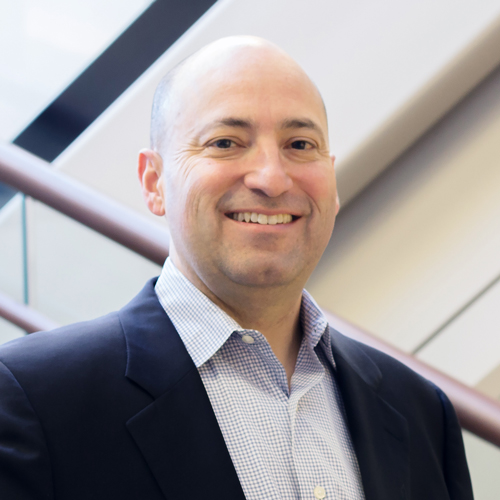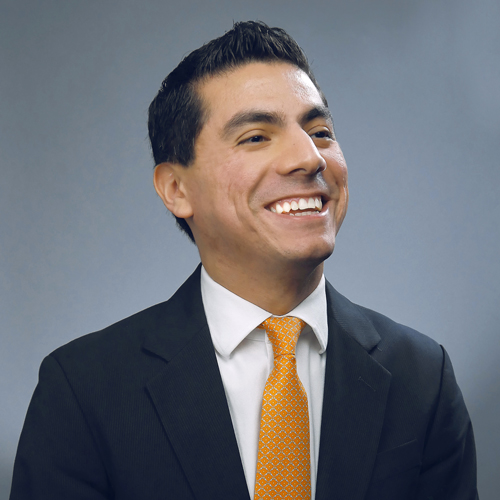Growing up in Taft, Texas, otherwise known as “the friendliest cotton-pickin’ town,” Diane Ramos was one of 77 in her graduating high school class. Her small-town upbringing sparked in her a vision to make a difference for her community, and her family’s support was critical as she became the first in her extended family to earn a college degree.

Throughout her career, Ramos has balanced roles as a leader in the community with family roles, as a wife and mother. Through finding that balance, she has been able to better help companies shape and attain their business and
cultural goals.
Her role as a mother of two young boys inspires her to focus on ethics, founded in faith. This perspective complements Ottobock’s third-generation family leadership and vision. For nearly 100 years, the organization has been dedicated to the vision that is embedded in the company’s DNA: restoring human independence.
Ottobock was originally founded to respond to the large number of injured veterans from World War I. Nearly 100 years later, its US-based headquarters in Austin, Texas, innovates solutions for anyone limited by mobility challenges including limb loss, spinal injury, or diseases like muscular dystrophy.
Ramos is a member of the management team, serving as regional director of human resources for Ottobock North America. She is one of three females on the management team and the only executive of Hispanic background. “I think of diversity in a company as less of a label and more of a value,” says Ramos. “I believe what I bring to the table is passion, a business-minded perspective, and constantly asking provocative questions to make everyone think about things differently. I also believe in leading from the heart, getting in there, and making an impact.”
Ramos helped make such an impact by leading the effort to bring Boston bombing survivor Heather Abbot to share her story with Ottobock employees in Austin and Salt Lake City. She feels this ongoing effort helps communicate the company values and provides better understanding of the company culture and vision. Abbot talked to employees about everyday challenges—from not being able to wear her favorite pair of high heels to the difficulties of TSA screenings at airports. Previous visitors have included Lt. Col. Andrew Lourake, the first above-knee amputee to fly for the US Air Force, and Kevin Trees, an active police officer in Louisville, KY.
Ramos’s big-picture vision positions Ottobock to create a diversity strategy that has a long-term endgame. She looks at ways to nurture collaboration and innovation by creatively filling resource needs. Specifically, she brings in colleagues from Ottobock locations around the world for temporary assignments and longer-term roles, and she is especially interested in developing international colleagues who can bring fresh perspectives to the table.
She believes this approach creates positive friction and a forward-moving energy that leads to lasting connections and learning. Recently, for instance, this meant a long-term financial-analyst assignment for a German colleague in the United States, and a transition into a new brand-management role for another senior marketer in the US.
In 2014, Ramos joined Ottobock in the newly created role of leading HR for North America as the organization was in the midst of moving its North American headquarters from Minneapolis to Austin.
“We are literally breaking down the walls in order to encourage a collaborative connection at work.”
Diane Ramos
When she came on board, Ramos balanced historical wisdom and learning from existing employees with leveraging the fresh lens that new talent can bring. She helped ensure the organization remained focused on business goals while creating an organization that reflected a commitment to human independence and mobility.
Her five-year goals include building the HR infrastructure, hiring the best talent, and continuing to build the company’s family culture.
Building an HR function with programs that attract, motivate, retain, and develop the best talent, according to Ramos, “is all about integrity, collaboration, and building the new Ottobock. We started by moving to Austin, which reflects Ottobock’s tradition of innovation and technology.” Austin is particularly attractive because of its entrepreneurial spirit and a growing economy that Forbes declared the eighth biggest tech hub in recent years.
Ramos remembers being attracted to Ottobock because of the sense of family she felt at the company. After spending more time with the company, she enjoyed seeing an entrepreneurial spirit and felt excited to be a part of a major transition with the move to Austin, where “tech meets tech,” as Ottobock’s CEO, Professor Hans Georg Näder, often notes.
In addition to relocation, the company transitioned to a dramatically different office layout this year. “We are literally breaking down the walls in order to encourage a collaborative connection at work,” says Ramos. “We are fully committed to doing business differently.”
Growth for Ottobock centers on knowing its employees and creating a company culture that feels like family. Ramos has to look at the employee population holistically. Company growth means addressing the ever-changing needs of the business and staff. To do that, she needs to have her finger on the pulse of the entire North America group, from a large Laotian population at the Salt Lake City plant to a group of young, millennial families in Austin.
Ramos’s previous experience in leading global organizations at Towers Watson gave her the foundation that will continue to aid her in creating an infrastructure and HR function that promotes engagement. “Engaged employees are developed and like coming to work every day,” she says. “They know what’s expected of them. They feel rewarded for the work they do. HR can help support our business with initiatives and programs that help increase engagement. Engagement is going to help our company be successful.”

